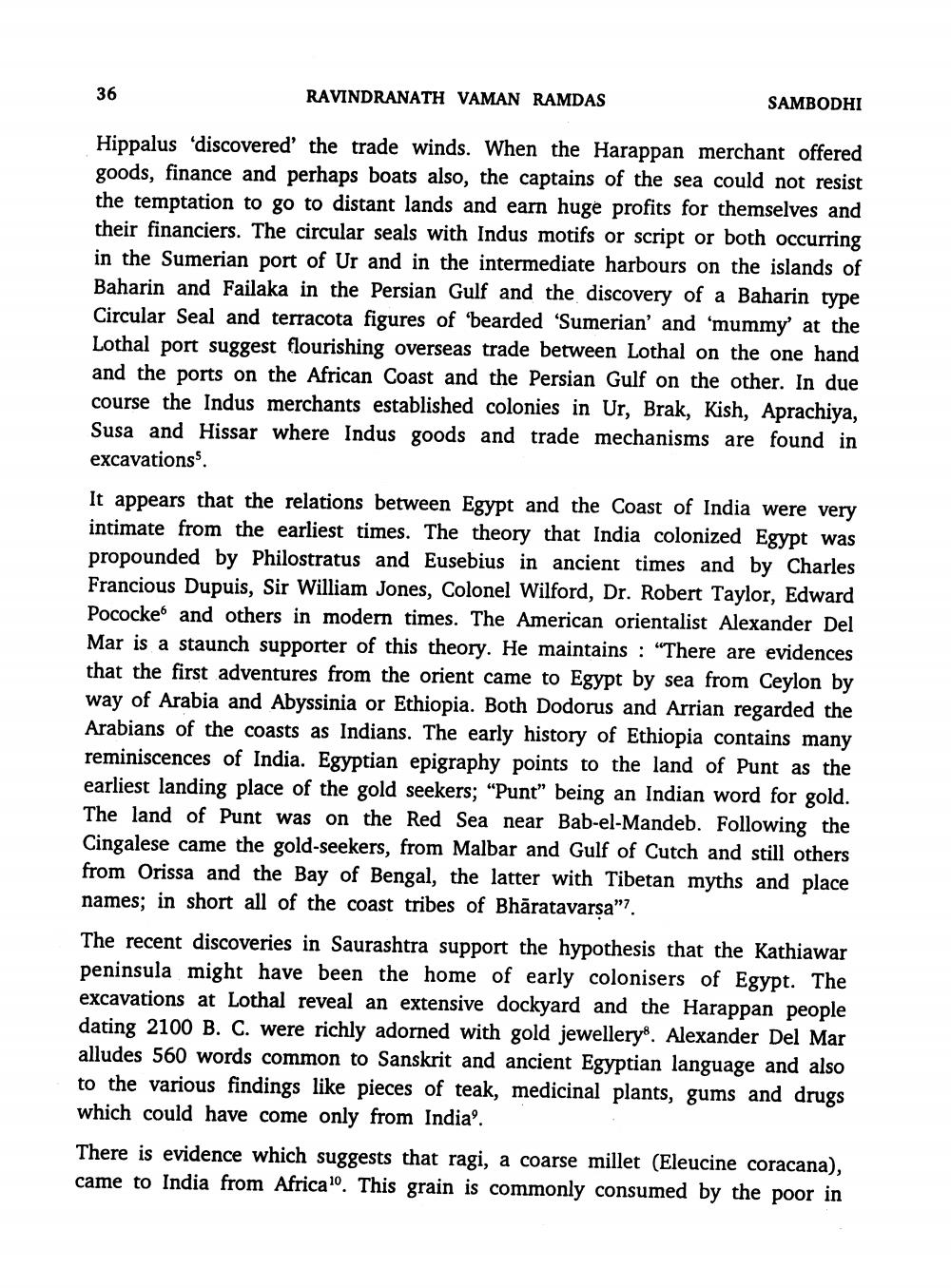________________
36
RAVINDRANATH VAMAN RAMDAS
SAMBODHI
Hippalus 'discovered the trade winds. When the Harappan merchant offered goods, finance and perhaps boats also, the captains of the sea could not resist the temptation to go to distant lands and earn huge profits for themselves and their financiers. The circular seals with Indus motifs or script or both occurring in the Sumerian port of Ur and in the intermediate harbours on the islands of Baharin and Failaka in the Persian Gulf and the discovery of a Baharin type Circular Seal and terracota figures of bearded 'Sumerian' and 'mummy at the Lothal port suggest flourishing overseas trade between Lothal on the one hand and the ports on the African Coast and the Persian Gulf on the other. In due course the Indus merchants established colonies in Ur, Brak, Kish, Aprachiya, Susa and Hissar where Indus goods and trade mechanisms are found in excavations. It appears that the relations between Egypt and the coast of India were very intimate from the earliest times. The theory that India colonized Egypt was propounded by Philostratus and Eusebius in ancient times and by Charles Francious Dupuis, Sir William Jones, Colonel Wilford, Dr. Robert Taylor, Edward Pococke and others in modern times. The American orientalist Alexander Del Mar is a staunch supporter of this theory. He maintains : “There are evidences that the first adventures from the orient came to Egypt by sea from Ceylon by way of Arabia and Abyssinia or Ethiopia. Both Dodorus and Arrian regarded the Arabians of the coasts as Indians. The early history of Ethiopia contains many reminiscences of India. Egyptian epigraphy points to the land of Punt as the earliest landing place of the gold seekers; “Punt” being an Indian word for gold. The land of Punt was on the Red Sea near Bab-el-Mandeb. Following the Cingalese came the gold-seekers, from Malbar and Gulf of Cutch and still others from Orissa and the Bay of Bengal, the latter with Tibetan myths and place names; in short all of the coast tribes of Bhāratavarsa"?
The recent discoveries in Saurashtra support the hypothesis that the Kathiawar peninsula might have been the home of early colonisers of Egypt. The excavations at Lothal reveal an extensive dockyard and the Harappan people dating 2100 B. C. were richly adorned with gold jewellery Alexander Del Mar alludes 560 words common to Sanskrit and ancient Egyptian language and also to the various findings like pieces of teak, medicinal plants, gums and drugs which could have come only from India'. There is evidence which suggests that ragi, a coarse millet (Eleucine coracana), came to India from Africa. This grain is commonly consumed by the poor in




